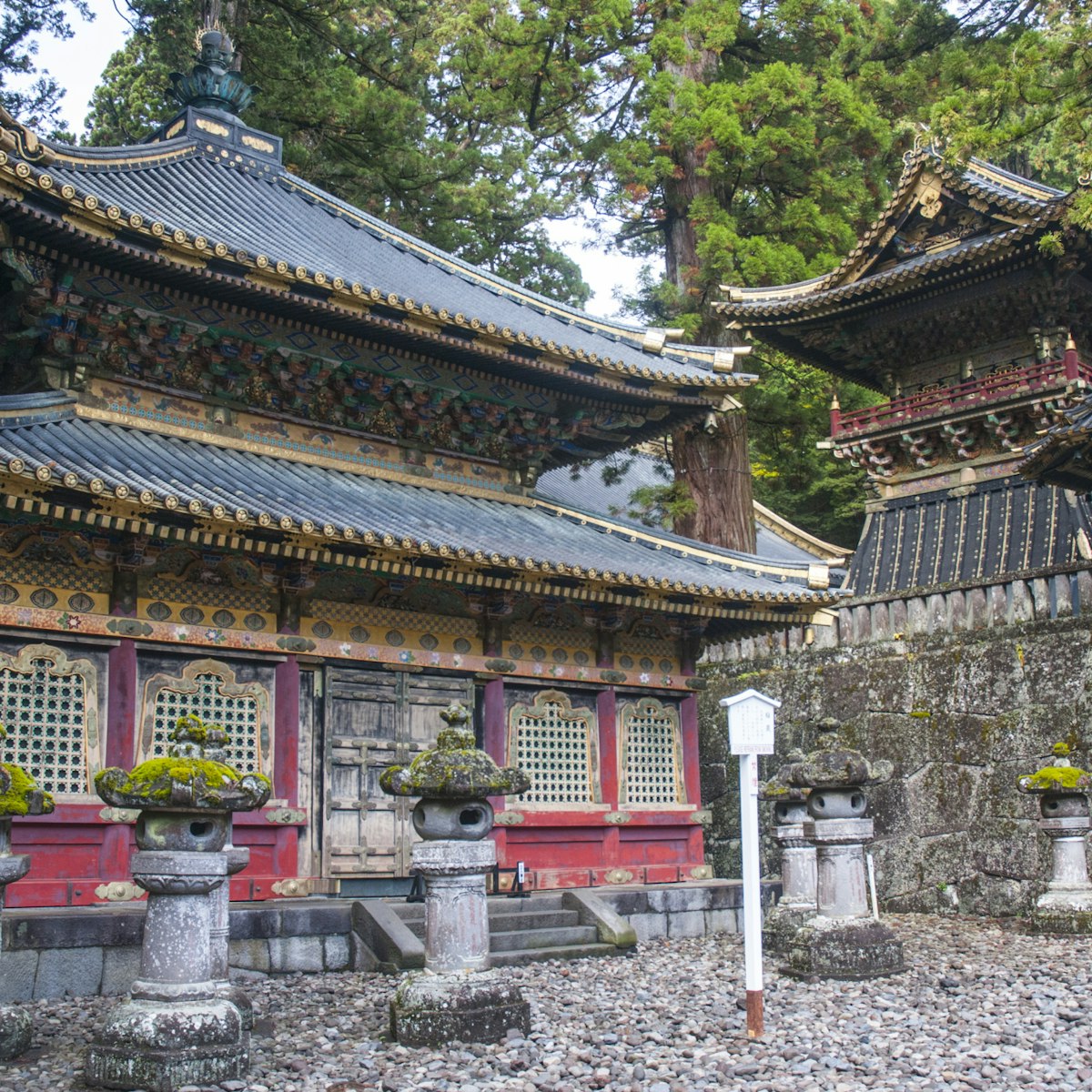°Õ²¹¾±²â¨±-¾±²Ô, completed in 1653, is the mausoleum of Tokugawa Iemitsu (1604¨C51), the third Tokugawa shogun and grandson of Ieyasu. (Ieyasu was deified, which earned him a shrine; Iemitsu was given an 'ordinary' temple burial). It has many of the same features as °Õ¨²õ³ó¨-²µ¨±: monumental gates, elaborate woodcarvings, lacquer and gold leaf, but is less grand (so as not to appear impudent). Many visitors find they prefer °Õ²¹¾±²â¨±-¾±²Ô for its comparatively restrained (though indeed still ornate) elegance, and also its fewer crowds.
Particularly impressive is its series of gates, ±·¾±¨-³¾´Ç²Ô (ÈÊÍõéT; 'Gate of the Virtuous Kings'), Niten-mon (¶þÌìéT; 'Gate of the Heavenly Kings') and Yasha-mon (Ò¹²æÃÅ; yasha are supernatural beings of Hindu origin), all guarded by fearsome deities. As part of ±·¾±°ì°ì¨ extensive restoration work, the statues have been returned to their polychrome glory, and look straight from the pages of a comic book. The final gate, Kara-mon (ÌÆéT; 'Chinese-style gate'), is decorated with more demure carvings of dragons and cranes.
°Õ²¹¾±²â¨±-¾±²Ô's Honden (±¾µî; Main Hall) and Haiden (’…µî; Hall of Worship) are almost entirely encased in gold leaf (with a slightly red sheen) and glossy black lacquer. Inside the main hall, 140 dragons painted on the ceiling are said to carry prayers to the heavens; those holding pearls are on their way up, and those without are returning to gather more prayers.


